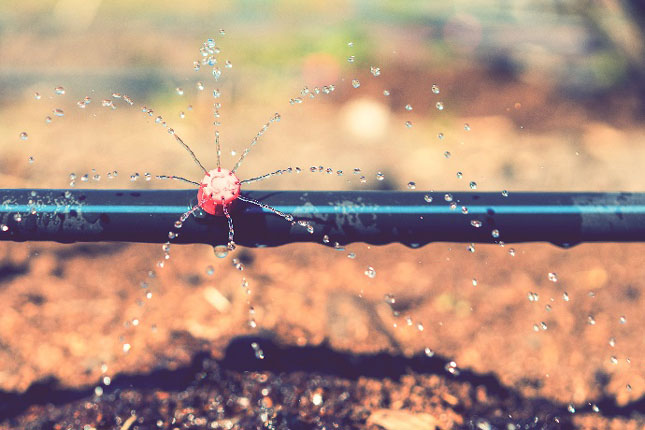|
Click to listen to this article
|
By Bryan Hansen, Kurita Area Manager
Do you have a micro-irrigation system that doesn’t seem to be working just right?
- Are some crops not growing as well as others?
- Has water use increased dramatically?
- Is there standing water in some areas while dry in other areas?
There could be a multitude of reasons for these issues, but one may be that your water is not being distributed evenly throughout your fields. Controlling the quantity of water in a drought is extremely difficult, if not impossible. However, improving the quality of water is attainable and will help your crop uptake more nutrients, while keeping your lines clean so the water can get to the crop.
Your irrigation system is at the heart of your operation. It deserves particular attention and will pay dividends quickly by lowering the cost of water and increasing your yield. Micro-irrigation maintenance, repair and/or replacement is necessary to keep your irrigation system operating efficiently to reach its design potential.
Micro-irrigation systems include sprinklers for tree crops; drip emitters for trees, vines, and some row crops; and drip tape for row and field crops. Micro-irrigation systems apply water to the soil through emitters that are installed along drip lines and contain very small flow passages. The systems can apply water and fertilizers more uniformly than other irrigation methods. This uniformity results in potentially higher yields, higher revenue, and reduced irrigation operating costs.
Uniformity, a performance characteristic of irrigation systems, is a measure of the evenness of the applied water throughout the irrigation system. Distribution Uniformity (DU), sometimes called Emission Uniformity (EU), is an index that describes how evenly or uniformly water is applied throughout the field. A uniformity of 100% means the same amount of water was applied everywhere. Unfortunately, all irrigation systems apply water at a uniformity of less than 100%, and therefore some parts of a field receive more water than others. Field evaluations have shown that micro-irrigation systems have the potential for higher uniformity than other irrigation methods. However, the small flow passages in the emitters and sprinklers make micro-irrigation systems highly susceptible to plugging. Plugging reduces the uniformity of the applied water and decreases the amount of applied water. Plugging also decreases the amount of salt leaching around the lateral line in saline soils.[i]
The problem with plugging
Plugged drip emitters and sprinklers result in a reduction, or total elimination, of water discharge from the emitter. Partially plugged drip emitters are particularly problematic since they reduce water application but can easily go unnoticed until they stop discharging entirely. Partial plugging of drip emitters is difficult to detect by eye, but you can detect it if you measure timed water discharge rates from a sampling of emitters. Partially plugged sprinklers are often easier to detect than partially plugged drip emitters since you can see an obvious disruption of the sprinkler’s spray pattern.[ii]
Some examples of waterborne plugging that can affect micro-irrigation systems include:
- Algae, biologicals, and other small plants and animals that live in, or seek, the water can still pass through the filters. Microbes that pass through the filters can continue to grow inside the system.
- Hard water issues leaving behind scale. Calcium carbonate, iron, or manganese to name a few.
- Iron-rich water leads to the formation of iron bacteria, which convert soluble iron to insoluble iron precipitates.
Solving plugging issues
There are several methods used to solve the issue of plugged emitters:
- Manually remove each emitter and hand-clean them
- Replace the irrigation system periodically
- Implement water treatment options:
- Shock treatment
- A one-time (sometimes annually) system treatment flushing lines with specific products to clean the lines and improve irrigation efficiency and effectiveness.
- Remedial treatment done after issues have been identified
- Maintenance
- Ongoing treatment using less product to ensure maximum irrigation efficiency for the entire irrigation season
- Shock treatment
What you can do
Integrating chemistry, equipment, remote monitoring, automation, and the correct water treatment program can help reduce water usage and increase distribution uniformity. In California, being efficient can help growers comply with the Sustainable Groundwater Management Act (SGMA) while maximizing the efficiency of their irrigation system.
For more information about proper micro-irrigation contact Brice Jones, Agriculture Regional Manager, Bryan Hansen, Agriculture Area Manager, or visit Kurita America.
[i] http://micromaintain.ucanr.edu/
[ii] http://micromaintain.ucanr.edu/Solutions/

